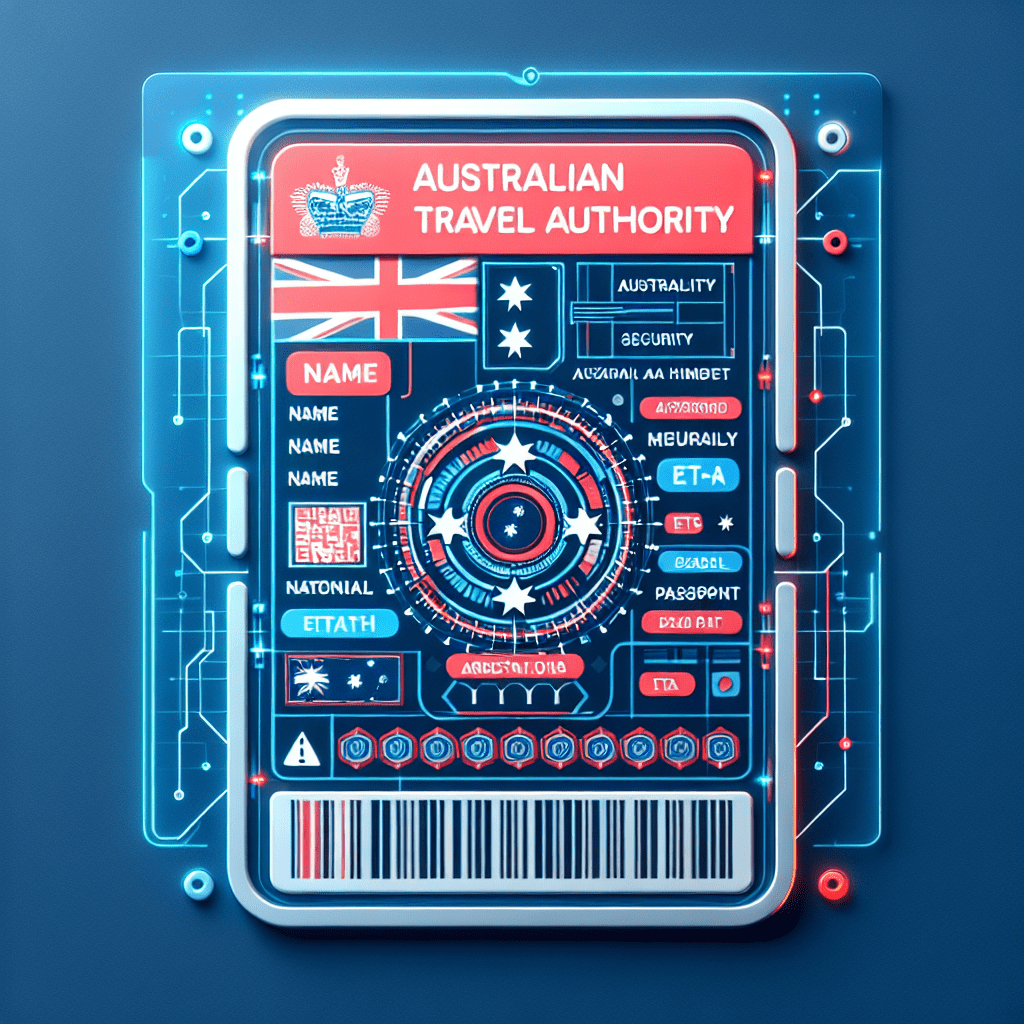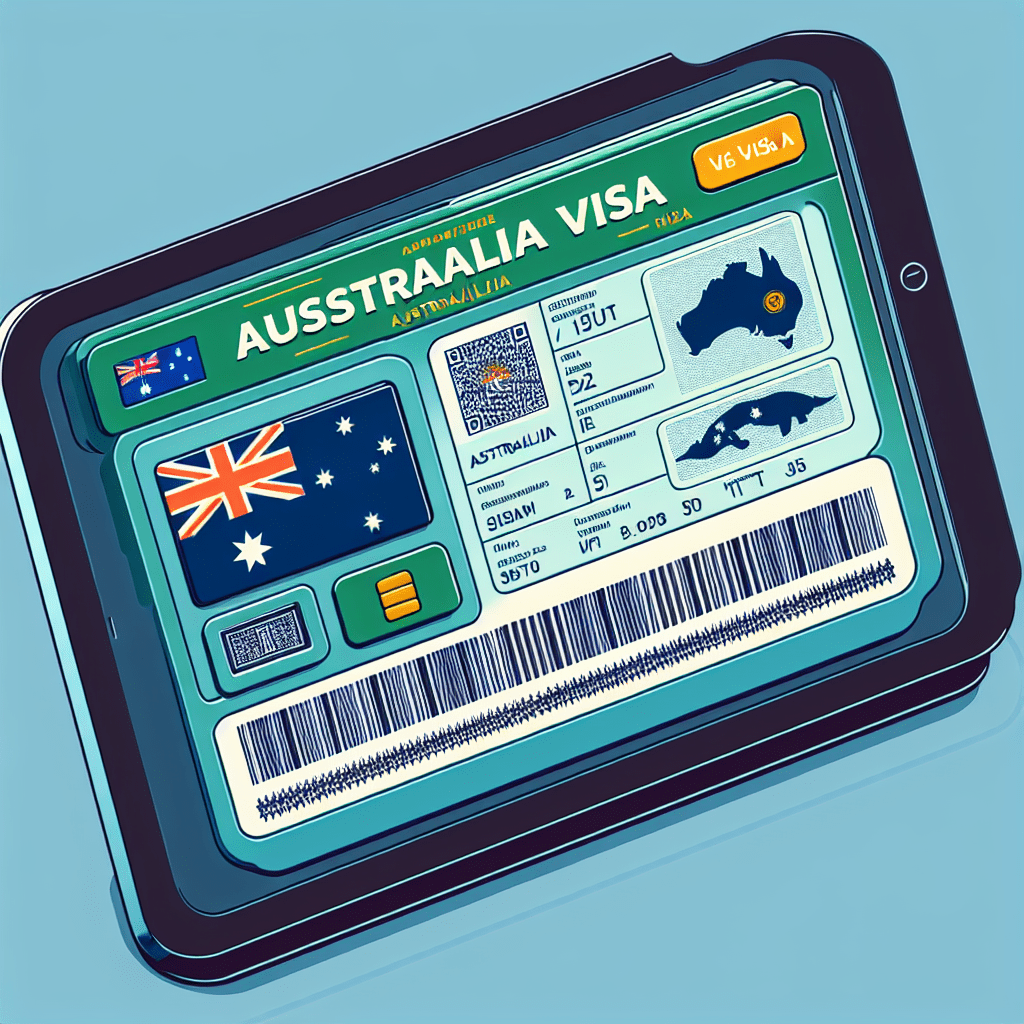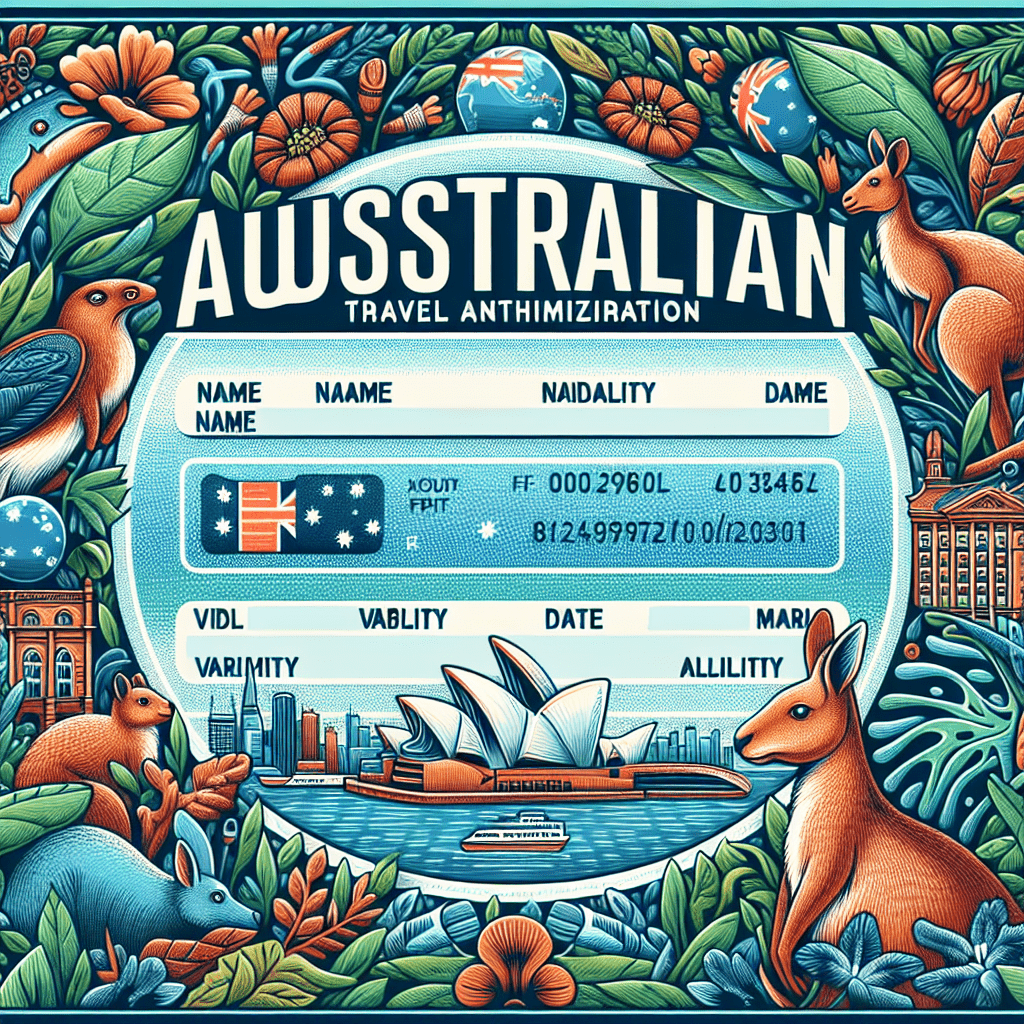Top 10 Mistakes to Avoid When Applying for an Australian ETA

The Australian ETA (Electronic Travel Authority) is a vital travel document for millions of visitors seeking quick and convenient access to Australia. Designed to simplify the entry process, the ETA allows eligible travelers to obtain electronic travel authorization without the need for a traditional visa application. This streamlined system has made Australia a more accessible destination for tourists, business visitors, and short-term travelers. However, despite its simplicity, many applicants encounter avoidable pitfalls that can delay or even jeopardize their travel plans.
Understanding the importance of the Australian ETA is essential for anyone planning a trip Down Under. Unlike conventional visas, the ETA is electronically linked to the traveler’s passport, eliminating the need for physical paperwork. This electronic travel permit Australia system is intended to reduce processing times and enhance border security. Yet, the ease of applying online can sometimes lead to complacency, resulting in common errors that complicate the process. From incomplete applications to misunderstandings about eligibility, these mistakes can cause unnecessary frustration and even denial of entry.
Many travelers underestimate the specific requirements and nuances involved in the ETA application. For example, confusion about passport validity, incorrect personal information, or failure to meet the Australia visa requirements can all lead to application rejection. Additionally, some applicants overlook the importance of submitting their ETA application well in advance, risking last-minute complications. Being aware of these challenges is crucial to ensuring a smooth and successful application experience.
For those seeking reliable guidance on navigating the ETA process, resources like Australian ETA services offer valuable support. These platforms provide up-to-date information on ETA application procedures, eligibility criteria, and common pitfalls to avoid. By recognizing and steering clear of the most frequent mistakes, travelers can save time, reduce stress, and focus on enjoying their visit to Australia.
In the following sections, the top 10 mistakes to avoid when applying for an Australian ETA will be outlined in detail. This knowledge empowers applicants to approach the process with confidence and clarity, ensuring their electronic travel authorization is approved without unnecessary delays or complications.

Mistakes Related to Eligibility and Basic Requirements
Overlooking Nationality Restrictions and Eligibility Criteria
One of the most common and critical mistakes applicants make when applying for an Australian ETA is overlooking the nationality restrictions and eligibility criteria. The ETA is not universally available to all travelers; it is specifically designed for citizens of certain countries whose passports qualify for this streamlined electronic travel permit Australia system. Misunderstanding which passports are eligible can lead to wasted time and effort on an application that will ultimately be rejected.
For example, travelers holding passports from countries outside the approved list must apply for a different type of visa, such as an Australian visitor visa or a more comprehensive Australia travel visa. Attempting to use the ETA for Australia when ineligible can cause delays and may even result in being denied boarding by airlines or refused entry upon arrival. It is essential to verify eligibility before starting the ETA application Australia process to avoid these complications.
Another frequent error is ignoring the specific travel purposes allowed under the ETA. This electronic travel authorization is intended primarily for short-term visits, including tourism, business meetings, or transit. It does not cover long-term stays, work, or study purposes. Applying for an ETA with the intention of engaging in activities outside its scope can lead to rejection or cancellation of the Australian entry permit. Understanding the permitted travel purposes ensures that applicants select the correct visa type and comply with Australia visa requirements.
Additionally, some applicants fail to verify prior visa restrictions or bans that may affect their eligibility. Previous visa refusals, cancellations, or breaches of visa conditions can impact the approval of an ETA. It is crucial to disclose any relevant history accurately and check whether any restrictions apply before submitting the application. Ignoring these factors can result in unexpected denials and complicate future attempts to obtain an Australia electronic visa or other travel authorizations.
Providing Incorrect or Incomplete Personal Information
Accuracy in personal information is paramount when applying for an ETA for Australia. One of the most frequent mistakes is submitting incorrect or incomplete details, which can cause delays or outright rejection of the application. Errors in name spelling, passport numbers, or date of birth are common and often avoidable with careful review.
For instance, a simple typo in the passport number or a mismatch between the name on the application and the passport can lead to discrepancies during Australian ETA processing. Since the ETA is electronically linked to the passport, any inconsistency can prevent the system from validating the travel authorization, resulting in denied boarding or entry. Applicants should double-check all personal data before submission to ensure it matches exactly with their official travel documents.
Submitting outdated or mismatched passport information is another critical error. Many travelers apply for an ETA using passport details that have since changed due to renewal or replacement. The Australian electronic entry system requires the passport used for travel to be the same as the one linked to the ETA. If the passport has been renewed after the ETA was granted, a new application must be submitted with the updated passport information. Failure to do so can invalidate the travel authorization and cause significant issues at the border.
Neglecting to include all required applicant details is also a common pitfall. The ETA application form requests specific information such as contact details, travel itinerary, and sometimes health declarations. Omitting any mandatory fields or providing incomplete answers can delay the approval process or lead to rejection. Ensuring that every section of the application is thoroughly and accurately completed is essential for a smooth experience.
Misinterpreting the Validity and Usage Terms of the ETA
Misunderstanding the validity and usage terms of the Australian ETA is a mistake that can have serious consequences for travelers. Many applicants confuse the ETA’s validity period with the length of stay permitted in Australia, leading to unrealistic expectations and potential overstays.
The ETA for Australia typically has a validity period of 12 months from the date of issue, during which multiple entries may be allowed. However, each individual stay is usually limited to a maximum of three months. Some travelers mistakenly believe that the ETA grants a continuous 12-month stay or that they can remain in Australia indefinitely within that period. This misinterpretation can result in overstaying, which violates Australia visa requirements and may affect future travel eligibility.
Another common error is assuming the ETA allows multiple entries without confirmation. While many ETAs do permit multiple entries, this is not guaranteed for every applicant or travel purpose. It is important to verify the specific conditions attached to the ETA approval Australia grants. Relying on assumptions rather than official confirmation can lead to denied re-entry or complications during subsequent visits.
Understanding the precise terms of use for the ETA, including the number of entries allowed and the maximum duration of each stay, is essential for compliance. Travelers should carefully review the conditions linked to their electronic travel permit Australia and plan their trips accordingly to avoid any legal or logistical issues.

Mistakes During the Application Submission Process
Using Unofficial or Fraudulent Websites and Services
One of the most significant mistakes travelers make when applying for an Australian ETA is using unofficial or fraudulent websites and services. The convenience of applying for an Australia electronic visa online has unfortunately attracted scammers who exploit unsuspecting applicants. These fraudulent platforms often promise expedited processing or guaranteed approval but instead deliver invalid applications or no service at all.
Relying on unauthorized third-party websites can lead to serious consequences. Many applicants fall victim to scams that charge exorbitant fees far above the official cost of the Australian travel authorization. These inflated prices do not guarantee any faster or more reliable processing and often result in wasted money and time. Worse still, submitting an application through a fraudulent site can cause delays or outright rejection, as the Australian government only recognizes applications submitted through official channels.
To avoid these risks, it is crucial to use only government-approved portals or authorized service providers when applying for an ETA for Australia. The official Australian ETA application website and trusted partners ensure that the electronic travel permit Australia is processed correctly and securely. Using these legitimate sources protects applicants from fraud, reduces the chance of errors, and guarantees that the Australian entry permit issued is valid and recognized at the border.
Applicants should be wary of websites that mimic official government pages but have subtle differences in URLs, branding, or payment methods. Always verify the authenticity of the site before entering personal or payment information. Checking for secure connections (https), official government domain extensions, and clear contact information can help identify trustworthy platforms. When in doubt, consulting reputable resources or official government websites is the safest approach to submitting an Australia visa online application.
Failing to Thoroughly Review the Application Before Submission
Another common error during the ETA application Australia process is failing to thoroughly review the application before submission. Even minor mistakes or omissions can cause significant delays or lead to rejection, making it essential to carefully check every detail before finalizing the application.
Simple data entry mistakes, such as typos in names, passport numbers, or dates, are surprisingly frequent and can disrupt Australian ETA processing. Since the ETA is electronically linked to the passport, any discrepancies between the application and the travel document can prevent approval or cause issues at immigration checkpoints. Taking the time to double-check all entered information ensures accuracy and reduces the risk of complications.
In some cases, applicants may overlook the need to provide supporting documents if applicable. While the ETA generally requires minimal documentation, certain situations—such as previous visa refusals or health declarations—may necessitate additional paperwork. Missing these critical documents can delay the Australia electronic entry approval or result in outright denial. Applicants should carefully read the instructions and provide all required information to meet Australia visa requirements fully.
Skipping critical eligibility confirmations is another pitfall. The application form often includes declarations regarding health, character, and travel history. Failing to answer these questions honestly and completely can lead to serious consequences, including visa cancellation or future travel bans. Ensuring that all eligibility criteria are confirmed and accurately represented in the application is vital for a smooth approval process.
Before submitting the ETA application, it is advisable to review the entire form multiple times and, if possible, have a trusted person verify the information. This extra step can catch errors that might otherwise be missed and improve the chances of receiving ETA approval Australia without delays.
Ignoring Payment Instructions and Confirmation Procedures
Payment is a critical step in the ETA application process, and ignoring proper payment instructions can cause unnecessary complications. Many applicants make the mistake of using invalid or unsupported payment methods, which can result in failed transactions or unprocessed applications.
The official Australia electronic visa system accepts specific payment options, typically including major credit and debit cards. Attempting to pay with unsupported methods such as wire transfers, prepaid cards, or third-party payment services may lead to rejection of the application or delays in processing. It is essential to follow the payment guidelines provided on the official application portal to ensure the transaction is successful.
Another frequent error is not retaining payment receipts or confirmation details after submitting the application. These documents serve as proof of payment and can be crucial if any issues arise during Australian ETA processing. Without a receipt or confirmation number, applicants may struggle to verify their payment status or resolve disputes with the issuing authority.
Applicants should always save or print the payment confirmation and any related correspondence immediately after completing the transaction. This practice provides peace of mind and a reference point in case follow-up is needed. Additionally, monitoring email inboxes for official ETA approval Australia notifications helps confirm that the application has been processed successfully.
By carefully adhering to payment instructions and maintaining proper records, travelers can avoid unnecessary delays and ensure their Australian travel authorization is issued promptly and without complications.

Mistakes Affecting Entry and Compliance After ETA Approval
Assuming Automatic Entry Without Proper Documentation Checks
Receiving ETA approval Australia is a crucial step in the travel process, but it does not guarantee automatic entry into the country. One of the most common mistakes travelers make is assuming that once the electronic travel permit Australia is granted, they can board their flight and enter Australia without further documentation checks. This misunderstanding can lead to significant issues at the airport or border control.
It is essential to carry the approved ETA confirmation during travel. Although the ETA is electronically linked to the passport, having a printed or digital copy of the approval notice can help resolve any discrepancies or technical issues that may arise during airline check-in or immigration processing. Some airlines may require proof of ETA approval before allowing passengers to board, so being prepared with the necessary documentation is critical.
Ignoring airline and border control document requirements is another frequent error. Airlines and Australian border officials have the authority to verify that travelers meet all entry conditions, including valid passports, ETA approval, and compliance with Australia visa requirements. Failure to present the correct documents or meet these conditions can result in denied boarding or refusal of entry upon arrival. Travelers should familiarize themselves with the specific documentation needed for their journey and ensure everything is in order before departure.
It is also important to understand that the ETA serves as permission to board a flight to Australia but does not guarantee entry. Final admission is determined by Australian Border Force officers at the point of entry, who assess compliance with immigration laws and health regulations. Being aware of this distinction helps travelers prepare adequately and avoid surprises during arrival procedures.
Failing to Comply with Australian Customs and Immigration Regulations
Compliance with Australian customs and immigration regulations is vital after receiving an Australian ETA. Many travelers underestimate the importance of adhering to these rules, which can lead to serious consequences, including fines, visa cancellation, or deportation.
One common mistake is not declaring prohibited items or restricted goods upon arrival. Australia has strict biosecurity laws designed to protect its unique environment and agriculture. Travelers must declare items such as food, plants, animal products, and certain medications. Failure to do so can result in heavy penalties and jeopardize the validity of the Australian entry permit. Understanding and following customs regulations is a key part of responsible travel and maintaining good standing with immigration authorities.
Underestimating the consequences of overstaying or breaching ETA conditions is another critical error. The ETA for Australia typically allows stays of up to three months per visit, and overstaying this period violates Australia visa requirements. Such breaches can lead to future travel bans, difficulties obtaining visas, or even legal action. It is essential to respect the terms of the ETA and plan travel accordingly to avoid these issues.
Additionally, missing updates related to ETA conditions or policy changes can cause inadvertent non-compliance. Immigration policies and visa regulations may evolve, and travelers should stay informed about any changes that could affect their electronic travel authorization. Regularly checking official sources or consulting with authorized Australian ETA service providers helps ensure ongoing compliance throughout the travel period.
Not Preparing for Contingencies or Errors Post-Approval
Even after receiving ETA approval Australia, travelers may encounter situations requiring adjustments or additional actions. Not preparing for these contingencies is a common mistake that can complicate travel plans.
Lack of awareness about how to correct or update an ETA is a frequent issue. Changes in passport details, travel dates, or personal information after approval may necessitate submitting a new ETA application or updating existing records. Understanding the procedures for making corrections helps avoid invalid travel authorizations and ensures smooth Australia electronic entry.
Failing to track the ETA expiration and renewal process is another oversight. Although the ETA generally remains valid for 12 months, travelers must monitor expiration dates and apply for renewal if planning multiple visits. Overlooking this can result in attempting travel with an expired electronic travel permit Australia, leading to denied boarding or entry.
Ignoring advice on what to do if the ETA is rejected or delayed can cause unnecessary stress and last-minute complications. In cases where ETA application Australia is not approved in time, travelers should have contingency plans, such as applying for alternative visas or adjusting travel dates. Being proactive and informed about next steps helps mitigate risks and ensures compliance with Australia visa requirements.
By preparing for potential issues after ETA approval and maintaining awareness of all relevant regulations, travelers can enjoy a hassle-free experience and make the most of their visit to Australia.

Ensuring a Smooth Australian ETA Application and Entry Experience
Avoiding the common mistakes associated with the Australian ETA application process significantly increases the chances of a hassle-free experience. The Australian ETA is designed to facilitate easy and efficient travel for eligible visitors, but overlooking key details can lead to unnecessary complications. By paying close attention to eligibility criteria, applicants can ensure they are applying through the correct channels and with the appropriate documentation. This foundational step prevents wasted time and effort on ineligible applications and helps travelers select the right type of Australia electronic visa for their needs.
Accuracy during the application submission is equally important. Providing complete and correct personal information, using official government portals, and following payment instructions carefully all contribute to a smooth Australian ETA processing experience. These steps reduce the risk of delays, rejections, or additional verification requests that can disrupt travel plans. Furthermore, understanding the terms and conditions of the ETA, including its validity and permitted length of stay, helps travelers avoid overstaying or breaching visa conditions, which can have serious consequences.
Once the ETA is approved, compliance with Australian customs and immigration regulations remains critical. Carrying the necessary documentation, respecting entry requirements, and adhering to biosecurity laws ensure that travelers maintain good standing with Australian authorities. Being prepared for contingencies, such as updating passport details or renewing the ETA before expiration, also helps prevent last-minute issues that could affect travel.
Careful attention to these aspects not only streamlines the application and entry process but also enhances the overall travel experience. Avoiding common pitfalls saves time, money, and stress, allowing visitors to focus on enjoying their trip to Australia. Whether traveling for tourism, business, or transit, a well-prepared ETA application and compliance with all requirements pave the way for a positive and trouble-free journey.
In summary, understanding and addressing the key areas of eligibility, application accuracy, and post-approval compliance are essential for anyone seeking an Australian travel authorization. By doing so, travelers can confidently navigate the ETA application process, secure timely ETA approval Australia, and experience seamless Australia electronic entry. This proactive approach minimizes the risk of costly delays or denials and supports a successful visit to one of the world’s most popular destinations.